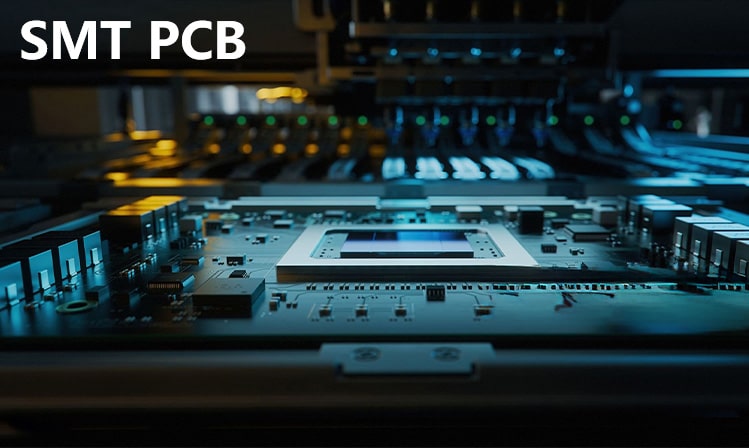Precautions for steel mesh manufacturing in PCBA processing
In the process of printed circuit board assembly (PCBA), the manufacturing of steel mesh is crucial. The steel mesh is used to accurately print solder paste onto the pads of the circuit board, so its quality directly affects the performance and reliability of the final product. The following are some key considerations in steel mesh manufacturing:
Steel mesh material selection
The selection of steel mesh material is the basis for manufacturing high-quality steel mesh. The ideal steel mesh material should have the following characteristics:
1. Good rigidity and flatness: The steel mesh needs to maintain a stable shape during the printing process, so the material should have good rigidity and flatness to ensure uniform printing of solder paste.
2. Strong corrosion resistance: During the PCBA processing, the steel mesh may be exposed to chemicals such as flux, cleaning agents, etc., so the material should have good corrosion resistance to ensure the service life of the steel mesh.
3. Moderate hardness and elasticity: The steel mesh needs to have a certain hardness and elasticity to ensure that the solder paste can pass through the mesh smoothly, while avoiding deformation of the mesh and causing a decrease in printing accuracy.
Common steel mesh materials include stainless steel and nickel alloy. Stainless steel has a lower cost, but is slightly inferior to nickel alloy in terms of corrosion resistance and elasticity; while nickel alloy has better corrosion resistance and elasticity, but is more expensive. When selecting materials, it is necessary to consider the specific needs and costs comprehensively.

Steel mesh structure design
The structural design of the steel mesh directly affects the printing accuracy and efficiency of the solder paste. When designing the steel mesh, the following factors need to be considered:
1. Mesh shape and size: The mesh shape should match the shape of the circuit board pad to ensure that the solder paste can be accurately printed on the pad; the mesh size needs to be accurately calculated based on factors such as the pad size and solder paste thickness to meet the printing requirements.
2. Screen frame size and thickness: The screen frame size should match the printing machine to ensure the stability and positioning accuracy of the steel mesh during the printing process; the screen frame thickness needs to be selected according to the rigidity and flatness requirements of the steel mesh.
3. Opening rate and mesh distribution: Reasonable opening rate design can improve printing efficiency and quality; the mesh distribution needs to be optimized according to the distribution of components on the circuit board to avoid interference and blockage during printing.
Manufacturing process requirements
The manufacturing process of steel mesh is the key link to ensure its manufacturing quality. In terms of manufacturing process, there are the following requirements:
1. High precision: The manufacturing of steel mesh requires high-precision processing equipment and processes to ensure the accuracy of mesh shape, size and position. Common manufacturing processes include laser cutting, electroforming, etc.
2. Surface treatment: The surface of the steel mesh needs to be polished, degreased, etc. to remove surface burrs and oil stains and improve the fluidity and smoothness of printed solder paste.
3. Strict testing: During the manufacturing process, it is necessary to strictly test various indicators of the steel mesh, including mesh size, opening rate, flatness, etc. Only qualified steel mesh can be put into use.
Use and maintenance requirements
In addition to the requirements in the manufacturing process, the steel mesh also has the following requirements in terms of use and maintenance:
1. Correct use: When using the steel mesh, it is necessary to follow the prescribed operating procedures to avoid excessive stretching, bending, etc., which may cause deformation or damage to the steel mesh.
2. Regular cleaning: During the use of the steel mesh, it will be contaminated with impurities such as solder paste and dust. In order to ensure the printing quality and extend the service life, it needs to be cleaned regularly. Special cleaning agents and tools should be used during cleaning to avoid damage to the steel mesh.
3. Proper storage: Unused steel meshes should be properly stored in a dry and clean environment to avoid deformation or damage caused by moisture, pressure, etc. At the same time, the steel mesh should be marked and classified so that the required steel mesh can be found quickly.
The manufacturing of SMT PCB is a delicate and critical process involving material selection, opening design, cutting technology and subsequent processing. Strict control of these details helps to improve the processing quality of PCBA, reduce welding defects, and thus improve the reliability and performance of the product. In actual operation, cooperation with experienced suppliers can also effectively ensure the quality of steel mesh.
PCBAMake is committed to providing you with high-quality, customized steel mesh solutions to meet your special needs and improve the performance and reliability of your products. Welcome to contact us to discuss more details about customized services!







